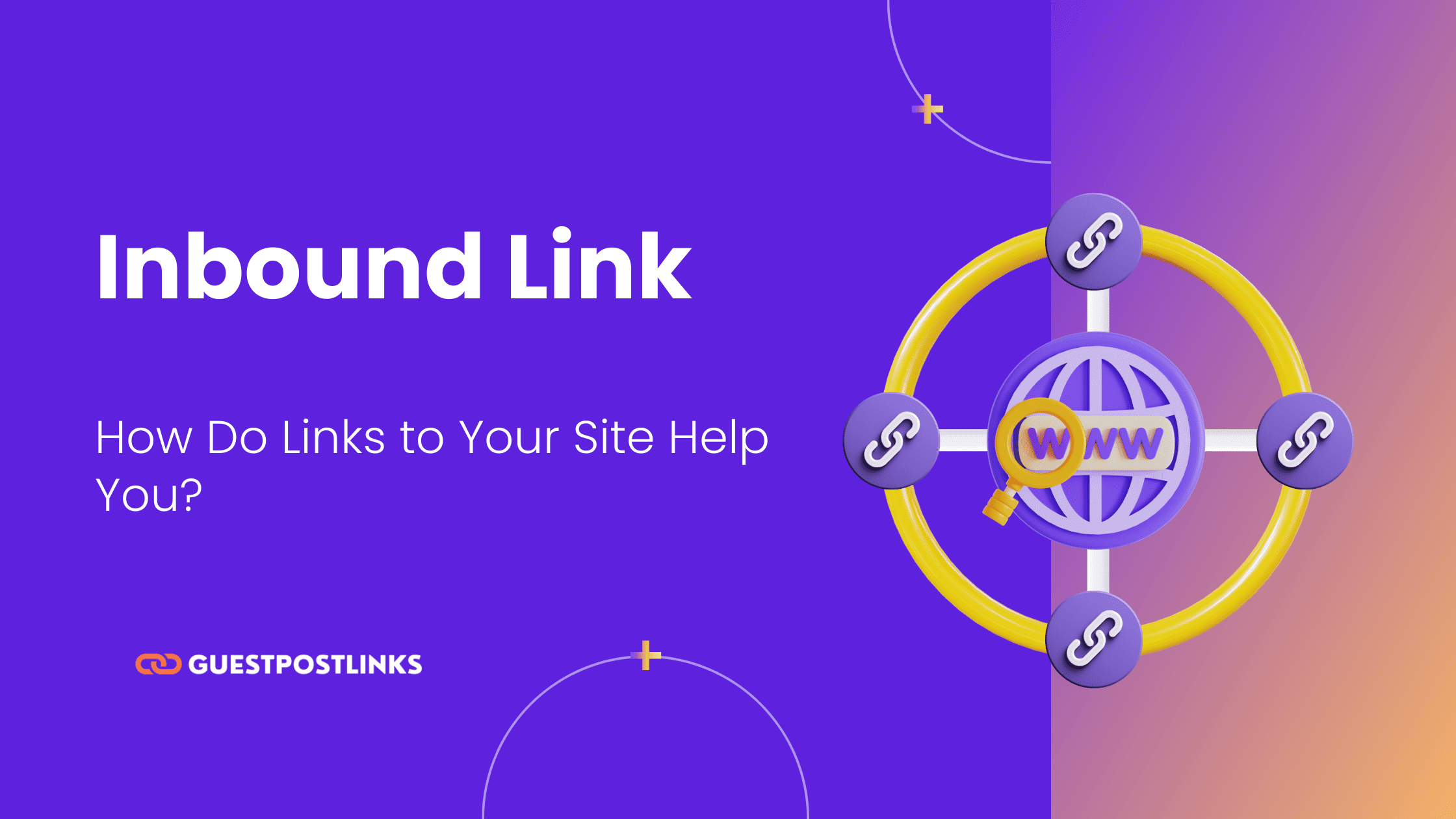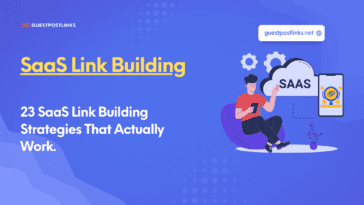Have you ever wondered what an inbound link is and why it matters for your website?
In this blog post, we will explore the concept of inbound links and delve into how they can significantly benefit your online presence.
Understanding the power of inbound links is essential for improving your search engine rankings, increasing traffic, and enhancing brand awareness.
So, let’s dive in and discover the world of inbound links and how they can help your website thrive.
What is an Inbound Link?
An inbound link, also known as a backlink, is a hyperlink that directs visitors from one website to another. It is an external link that originates from a different domain and points to your website. In simpler terms, it’s like a recommendation or endorsement from another website, signaling to search engines that your site is valuable and worthy of attention.
Why Do I Need Inbound Links?
Higher Rank in Search Engine Results
Inbound links play a crucial role in search engine optimization (SEO). Search engines consider backlinks as votes of confidence, indicating that your website has relevant and high-quality content. The more inbound links you have from reputable websites, the higher your chances of ranking well in search engine results pages (SERPs).
Increase Traffic
In addition to improving your search engine rankings, inbound links can drive direct referral traffic to your website. When users come across a link on another website that piques their interest, they are likely to click on it and explore the linked content. This generates new streams of traffic to your site, expanding your reach and potential customer base.
Increase Brand Awareness
When reputable websites link to your content, it boosts your brand’s visibility and credibility. Inbound links act as endorsements, establishing your website as a trustworthy and authoritative source within your industry. As more people encounter your brand through these links, your online reputation grows, leading to increased brand awareness.
Business Relationship
Inbound links can foster valuable relationships with other businesses and websites. When industry leaders or influencers link to your site, it opens up opportunities for collaboration, guest posting, and co-marketing initiatives. Building these relationships can further expand your online presence and attract a wider audience.
Also Read: Backlinks vs Inbound Links: Understanding the Key Differences for SEO Success
Other Types of Links
Outbound Links
Outbound links are links from your website to external sites. While inbound links focus on directing traffic to your site, outbound links provide additional information or resources to your visitors. Strategic use of outbound links can enhance your content’s credibility and improve user experience.
Internal Links
Internal links are hyperlinks within your own website that connect different pages or sections. They facilitate navigation and help search engines understand the structure and hierarchy of your website. Internal links can also pass link authority and distribute it across your site, benefiting your overall SEO strategy.
What Does a Good Inbound Link Look Like?
A good inbound link possesses certain qualities that enhance its effectiveness. It should come from a reputable and relevant website with high domain authority. The anchor text, which is the clickable text of the link, should accurately reflect the content it leads to. Additionally, the link should be contextual and seamlessly integrated into the referring website’s content.
How Do I Build My Inbound Links?
Building inbound links requires a proactive approach and creative strategies.
Here are some effective techniques to consider:
Create Free Tools
Developing useful and free tools related to your industry can attract attention and generate inbound links. When people find value in your tools, they are likely to share them, linking back to your website as the source.
Create Shareable Templates
Similar to free tools, creating shareable templates can be a valuable resource for your target audience. Templates for various purposes, such as project management, design, or content creation, can attract links when others find them helpful.
Create Compelling Infographics
Visual content, particularly infographics, has a high potential for attracting inbound links. By presenting information in a visually appealing and shareable format, you increase the likelihood of others embedding and linking to your infographics.
Create Other Forms of Visual Content
In addition to infographics, consider creating other types of visual content such as videos, slideshows, or interactive graphics. Engaging visual content has a higher chance of being shared and linked to by others.
Create Great Content
High-quality and valuable content is a magnet for inbound links. Focus on creating comprehensive, informative, and well-researched articles, guides, case studies, or thought leadership pieces that provide unique insights and solutions to your target audience’s problems.
Create SlideShare Presentations
SlideShare is a platform for sharing presentations, and it can be a great tool for generating inbound links. Convert your content into visually appealing slideshows and upload them to SlideShare, ensuring you include links back to your website.
Write Newsjack Posts
Stay up to date with the latest news and trends in your industry and craft relevant and timely blog posts around them. Newsjacking involves leveraging current events to provide unique perspectives and insights, increasing the chances of your content being shared and linked to.
Volunteer to be the Subject of a Case Study
Offer your expertise and insights to other businesses or organizations that conduct case studies. When they publish the case study, they are likely to include a link back to your website as a reference.
Identify Broken Links Through Site-Crawling Tools
Use site-crawling tools like Screaming Frog or Ahrefs to identify broken links on other websites within your niche. Reach out to the website owners, informing them of the broken link and suggesting your content as a suitable replacement, thus gaining a potential inbound link.
Choose your Keywords Wisely
Perform keyword research to identify relevant and popular keywords related to your industry. Incorporate these keywords naturally into your content, making it more likely to appear in search results and attract inbound links.
Incorporate “Tweet This” Links into Your Content
Encourage readers to share snippets of your content on social media by incorporating “Tweet This” links. This makes it easy for users to share your content and potentially generate inbound links when others reference or retweet those snippets.
Fix Broken Inbound Links
Regularly monitor your website for broken inbound links using tools like Google Search Console. When you find broken links pointing to your site, reach out to the website owners and suggest alternative URLs or content, increasing the chances of getting those broken links fixed.
Give Away Free Trials and Sneak-Peeks of Your Product
Offering free trials or exclusive sneak-peeks of your product or service can attract attention and generate buzz. When people try and appreciate your offering, they are more likely to write about it or link back to your website.
Maintain a Steady Blog with Great Content
Consistently publishing high-quality content on your blog not only provides value to your audience but also increases the likelihood of attracting inbound links. Share your expertise, insights, and industry knowledge through informative blog posts.
Link to other Blogs on Your Blog
When you mention or reference other bloggers or websites in your blog posts, be sure to include outbound links to their content. This can help you establish connections and increase the chances of those bloggers or website owners linking back to your content in the future.
Write Guest Blog Posts
Reach out to other relevant and authoritative websites in your industry and offer to write guest blog posts for them. Guest blogging not only allows you to showcase your expertise to a new audience but also provides an opportunity to include a link back to your own website in the author bio or within the content itself.
Curate and Publish Helpful Resource Lists
Create curated lists of valuable resources, tools, or articles related to your industry. When people find these lists useful, they are likely to share and link to them, driving inbound links to your website.
Also Read: Ultimate SEO Glossary: 499+ Essential SEO Terms You Need to Know!
Do Expert Roundups to Build Relationships
Collaborate with industry experts by conducting expert roundups. Ask them a specific question or for their insights on a particular topic, compile their responses into a blog post, and let them know once it’s published. They may be inclined to share and link to the roundup, providing you with valuable inbound links.
Do Something Funny
Humor can be a powerful way to capture attention and generate inbound links. Create funny and shareable content, such as humorous videos, comics, or memes, that relate to your industry or target audience’s interests.
Ask for Reviews
Reach out to satisfied customers, clients, or partners and ask them to write reviews of your product or service. These reviews, when published on their websites or review platforms, can include links back to your website, driving both referral traffic and inbound links.
Write and Pitch op-ed Articles
Share your expertise and insights by writing op-ed articles for reputable publications or industry-specific websites. Include a link back to your website in the author bio or within the content to drive traffic and establish credibility.
Do Some Co-Marketing
Collaborate with other businesses or influencers in your industry to create joint marketing campaigns, content, or events. This collaborative effort can lead to mutual promotion and the generation of inbound links.
Administer Surveys
Conduct surveys or studies related to your industry and share the results on your website. The data and insights you provide can be valuable to others, increasing the chances of them linking to your survey or referencing your findings.
Write Book Reviews
If there are books relevant to your industry or niche, write thoughtful and insightful reviews about them. Reach out to the authors or publishers, letting them know about your review. They may share it or link to it, driving inbound links to your website.
Sponsor or Speak at an Event
Sponsoring or speaking at industry conferences, seminars, or webinars can position you as an authority in your field. Event organizers often provide opportunities for sponsors and speakers to be featured on their websites with links back to their websites.
Install Social Sharing Widgets
Make it easy for visitors to share your content by incorporating social sharing widgets on your website. When people find your content valuable and share it on social media, it can attract attention and potentially generate inbound links.
Conclusion
Inbound links are essential for boosting your website’s visibility, authority, and organic traffic. By implementing effective link-building strategies, you can attract quality backlinks, improve your search engine rankings, and ultimately, grow your online presence.
FAQs
Inbound links, also known as backlinks, are hyperlinks that direct visitors from external websites to your site. Outbound links, on the other hand, are hyperlinks from your website to external sites.
You can find inbound links by utilizing various tools such as Google Search Console, backlink analysis tools like Ahrefs or Moz, or by monitoring your website’s referral traffic.
No, a hyperlink is not necessarily inbound. A hyperlink becomes inbound when it originates from a different website and points to your website. If it directs visitors within your own site, it is considered an internal link.





 No publishers in the cart.
No publishers in the cart.